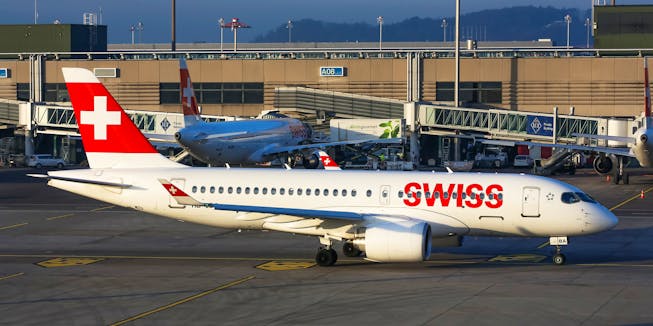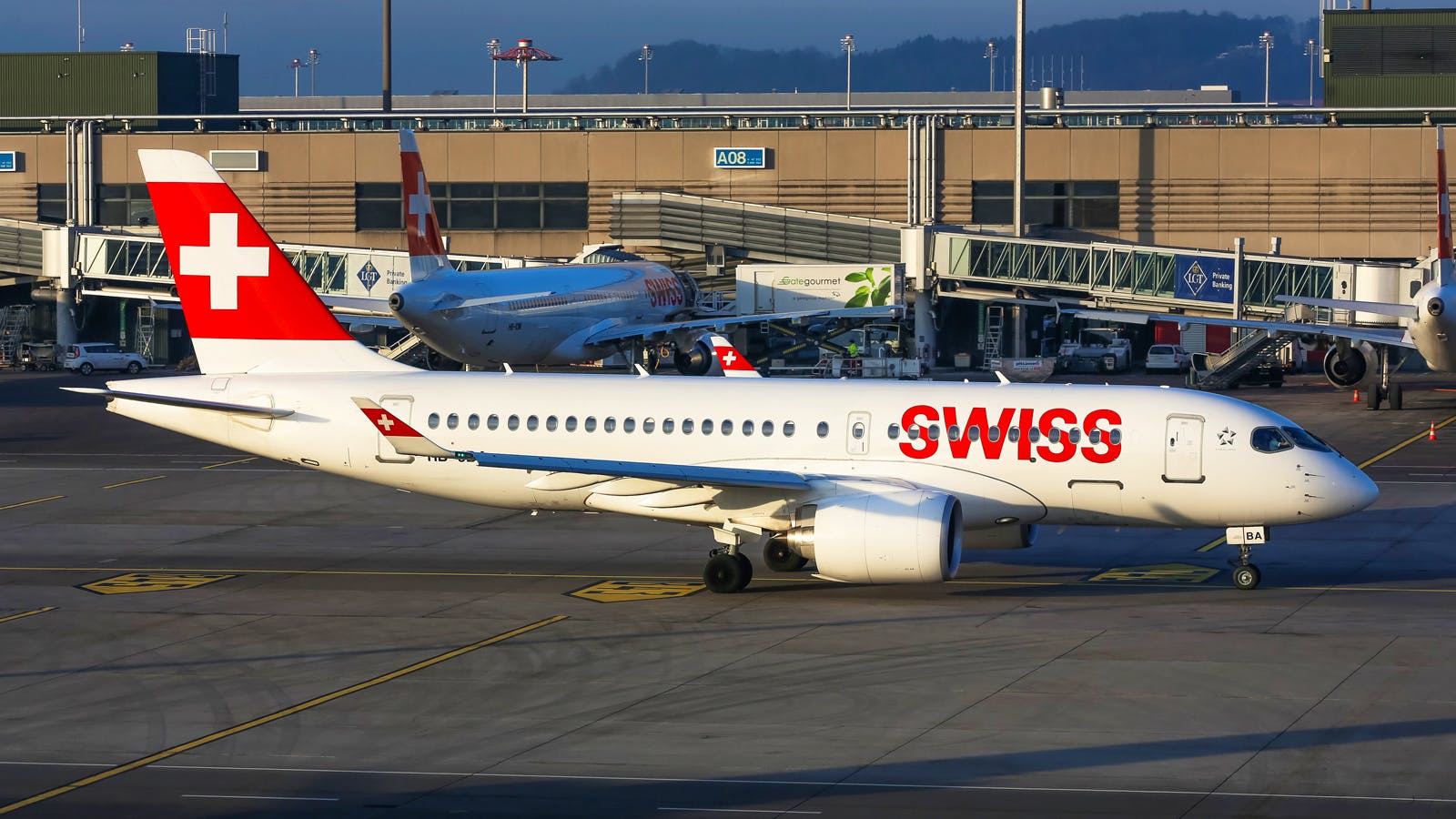Former C Series
Many years of trouble with the A220 engines
The difficulties with the engines of the former C-Series jets date back to 2014. Swiss has already had a lot of work with the engines.

Airbus A220 von Swiss: Nicht immer eine einfache Beziehung.

Airbus A220 von Swiss: Nicht immer eine einfache Beziehung.
«This morning (15OCT19) on flight LX359 from LHR to GVA a new engine failure occurred on one of our C Series aircraft» – with these words Swiss informed its staff on Tuesday (15 October) about an incident with an Airbus A220 jet, the former C-Series. On the way from London to Geneva there was an «audible engine defect», and the pilots of the Swiss airline switched off the engine and performed an unscheduled landing in Paris. It was the third incident of this kind in three months. And Swiss decided to order all A220s back to their bases for extensive inspection.
The traces of these engine problems, however, go back much further than the last three months. In 2014, the C-Series was still in the test phase at the then manufacturer Bombardier when an incident occurred during an engine test on 29 May. The test pilot FTV-1 experienced a so-called uncontained engine failure in which parts were ejected from the engine. This also happened on 25 July and 16 September 2019 at Swiss, both on the Geneva-London route. Whether the current incident is also an uncontained engine failure is still unclear.
More Incidents
In 2014, after three months of investigations by Bombardier and the engine manufacturer Pratt & Whitney, the C-Series took off again. Bombardier wrote in a media release at the time that various measures had been taken to prevent such an event from recurring.
Then it became quiet some time around engine problems with the C-Series, as the planes went to the first operators. But in August 2018, Air Baltic pilots had to shut down the right engine of their aircraft due to oil pressure problems, as documented by the Portal Aviation Herald. In September and October 2018 there are also reports of Swiss C-Series aircraft engines shutting down on their way to Zurich due to oil problems.
Swiss checks for oil leaks
Later, the Federal Aviation Administration addressed the oil problem. It warned that a gap could form between components through which oil could run into the engine. This would create the danger of «engine fire and damage to the aircraft». Swiss confirmed to aeroTELEGRAPH that after the discovery of an oil leak «the entire fleet had been inspected within the scope of the regular checks, but no further cases had been detected».
In December 2018, when 26 C Series were flying for Swiss, more repair work was necessary. «Pratt & Whitney has been running a modification programme for some time,» said a Swiss spokesman at the time. The engines had to be dismantled from the A220, shipped to Pratt & Whitney and reattached to the aircraft after repair. «The whole thing takes about two to three months,» explained the spokesman. The modifications carried out were said to have concerned non-safety-relevant premature signs of fatigue.
Second directive
Also in December 2018, an incident occurred with a Korean Air A220. Damage to the engine’s low-pressure compressor forced the South Korean airline’s A220 to turn back. And in June 2019, an A220 from Delta Air Lines had to perform a go around at La Guardia because the left engine failed or at least did not deliver full power.
In July and September 2019, two further Incidents with the A220 occurred. They also called the FAA into action. The American authorities issued an airworthiness directive on 26 September in which they identified the low-pressure compressor as a problem in the two incidents. The FAA ordered operators to check their engines.
